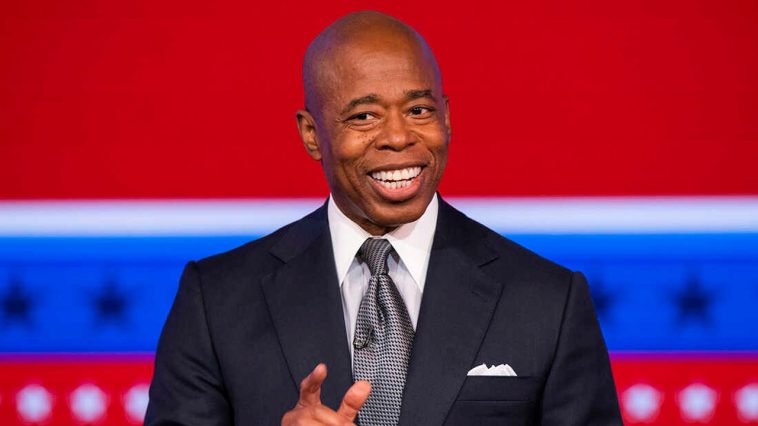In preparation for the termination of Title 42 on Thursday, New York City is adapting its policies on providing shelter to those in need. The Democratic Mayor of NYC, Eric Adams, enacted an executive order on Wednesday that modifies the city’s laws concerning the provision of shelter to both migrants and the homeless. City Hall spokesperson Fabian Levy said on Wednesday night that this was not a decision taken lightly, and the city will continue to make every effort to provide shelter for asylum seekers.
The new policy change means that New York City will no longer guarantee that families with children will be given a bed by 4 a.m. if they arrive at an intake facility by 10 p.m., as reported by the New York Post. This adjustment comes as both the Adams administration and border states brace for the upcoming end of Title 42.
The potential influx of migrants into the city is, in part, due to Texas Governor Greg Abbott’s policy of bussing thousands of migrants to various parts of the country. Abbott has claimed that this initiative is meant to reduce the burden on border towns while simultaneously confronting leaders of larger cities with the actuality of the border crisis.
On Wednesday, Texas officials sent a busload of migrants to Philadelphia, marking the first time in months this has occurred. This event could be an indicator that Governor Abbott intends to increase the frequency of his bussing program as conditions at the southern border worsen.
Throughout the past year, New York City has experienced difficulty accommodating more than 30,000 migrants. Mayor Adams has been a prominent opponent of Governor Abbott’s bussing program, often expressing his disapproval.
Earlier last week, Adams accused Abbott of targeting predominantly African American mayors with his bussing initiative. However, the mayor later clarified that his comment was not intended to be an accusation of racism.
During a statement issued on Tuesday, Adams said, ‘Let’s be clear… I never used the term racist. That was a little creative journalism that was used.’ He continued by examining the facts, noting that out of 108,000 cities in New York, several with African American mayors were among those receiving asylum seekers as a result of Abbott’s bussing policy.
According to Adams, ‘Governor Abbott sent asylum seekers to New York – Black mayor; to Washington – Black mayor; to Houston – Black mayor; to Los Angeles – Black mayor; to Denver – Black mayor. He passed over thousands of cities to land here.’
The termination of Title 42 and its potential consequences will be addressed later on Thursday by White House press secretary Karine Jean-Pierre and Homeland Security Secretary Alejandro Mayorkas.
Title 42 was originally enacted to protect public health during the COVID-19 pandemic. Its removal is expected to increase the number of migrants seeking asylum in the United States, resulting in additional pressure on already strained systems.
In anticipation of this increased demand for resources, Mayor Adams’ decision to amend New York City’s shelter policies reflects the need for adaptability and prudent management of the city’s resources.
Governor Abbott’s migrant bussing program, though controversial, has shone a light on the challenges faced by both border towns and larger cities as they grapple with an unprecedented migration crisis.
It remains to be seen whether the lifting of Title 42 will significantly impact the situation at the southern border, but ongoing discussion and cooperation among local, state, and federal leaders are essential to addressing the complex issues surrounding immigration and asylum seekers.
New York City’s updated shelter policies signal a cautious, strategic approach in preparation for what could be a difficult period of housing a potentially heightened number of migrants and homeless residents.
As the Mayorkas and Jean-Pierre prepare to discuss the implications of Title 42’s termination, it will be crucial for leaders across the nation to weigh the diverse needs of their communities and utilize their resources effectively while keeping the wellbeing of their citizens at the forefront.


